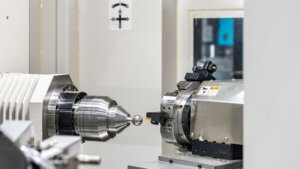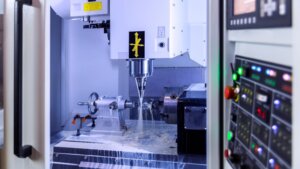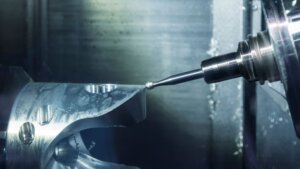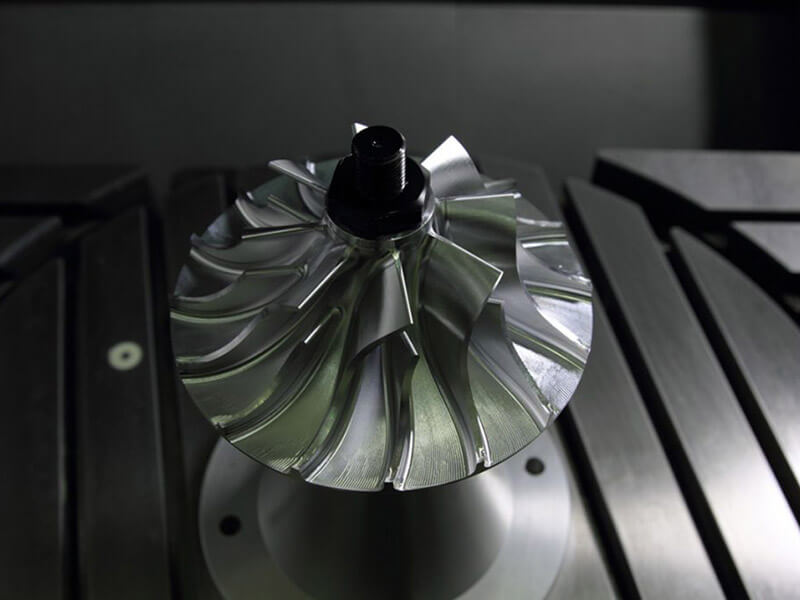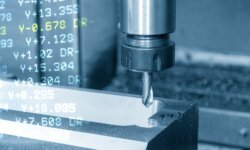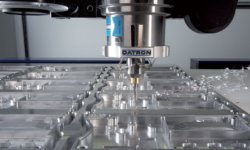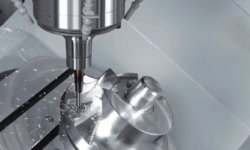In the thriving era of automation, 4-axis machining has paved its way into various manufacturing processes. It is intriguing, complex, yet crucial to understand the intricacies of this automated marvel.
What is 4-Axis Machining?
4-Axis machining, commonly known as 4-axis CNC machining, is a multi-axis machining process that utilizes CNC machines equipped with an additional rotary axis.
This process involves a CNC machine that moves in four different axes simultaneously. It usually involves X, Y, Z (the three linear axes) and an additional axis, the A-axis, which is a rotational axis around the X-axis. This unique characteristic allows for machining complex parts and milling at odd angles, not possible with 3-axis machining.
- CNC stands for Computer Numerical Control.
- X, Y, and Z axes refer to three mutually perpendicular directions.
- The A axis provides the ability to rotate the workpiece around the X axis.
The Process of 4-Axis CNC Machining
Understanding the process of 4-axis CNC machining requires focusing on the movements and capabilities of CNC machines. These machines work seamlessly, moving the cutting tool along the X, Y, and Z axes while simultaneously rotating the workpiece on the A axis. This extra axis allows the machine to operate on the workpiece from different angles and helps create complex parts with precision.
Steps in 4-axis CNC Machining
- CAD Design: A product is first designed using Computer-Aided Design (CAD) software. The designer will often use a Windows PC for this process.
- CAM Path: Once the design is completed, Computer-Aided Manufacturing (CAM) software creates a toolpath for the CNC machine to follow.
- Setup: The workpiece is mounted on the CNC machine, and the machine is set up with the appropriate cutting tools.
- Machining: The machine then begins the machining process. It moves in the X, Y, and Z directions while the mounted workpiece rotates on the A axis, allowing for continuous machining at different angles.
- Finishing: Once the machining process is complete, any necessary finishing operations, such as cleaning or deburring, are performed.
What are the Types of 4-Axis CNC Machines?
There are various types of 4-axis CNC machines, each with its unique capabilities and suited for different applications.
Milling Machines
These are perhaps the most commonly used 4-axis CNC machines. They are ideal for creating complex parts with features like angled cuts and holes. The additional A-axis allows the cutting tool to approach the workpiece at an angle, enabling it to mill slots and holes at any required angle.
Lathes
4-axis CNC lathes are used for turning operations. The added axis lets the lathe tool approach the workpiece at any angle, thereby enabling the manufacture of complex geometries. Lathes can work on a variety of materials, such as metal, wood, and plastics, offering a wide range of possibilities for manufacturing industries.
Routers
Used primarily in the woodworking industry, 4-axis CNC routers offer precision and the ability to work on large parts. Their robust construction and easy setup make them a valuable asset in any production line.
Applications of 4-Axis CNC Machines
4-axis CNC machines have a wide range of applications due to their ability to create complex parts and components. Here are a few sectors where these machines have made a significant impact:
- Aerospace Industry: Due to their precision and ability to work on complex geometries, 4-axis CNC machines are widely used in the aerospace industry. They can manufacture intricate parts such as turbine components and airframe components with great precision and at high speed.
- Automotive Industry: From engine components to body parts, the automotive industry heavily relies on 4-axis CNC machining for production. The ability to work at odd angles and produce complex parts efficiently makes them a staple in this industry.
- Electronics Industry: The manufacturing of electronic components requires a high level of precision. 4-axis CNC machines can achieve this by creating components such as circuit boards and casings.
- Oil and Gas Industry: The oil and gas industry requires parts that can withstand extreme conditions. 4-axis CNC machines can deliver this by creating high-quality, durable components.
Benefits of 4-Axis CNC Machining
4-axis CNC machining comes with a slew of benefits that increase efficiency and provide cost-effective solutions for various manufacturing industries. Here are a few significant advantages:
- Enhanced Capabilities: The additional A-axis allows for the creation of more complex parts that would be difficult to achieve with three axes. This opens up new possibilities in design and manufacturing.
- Increased Efficiency: By allowing for continuous machining from different angles without needing to adjust the workpiece manually, 4-axis CNC machining can significantly reduce production time.
- Higher Precision: The added axis offers greater control over the machining process, leading to improved precision and accuracy.
- Versatility: From small electronic parts to large aerospace components, 4-axis CNC machines can handle a variety of materials and part sizes, making them versatile tools in any manufacturing setup.
Disadvantages of 4-Axis CNC Machining
While the benefits of 4-axis CNC machining are evident, it’s essential to acknowledge some of its limitations.
- Costly Setup: The purchase and setup of a 4-axis CNC machine can be quite expensive, making it a significant investment for any business. However, considering the efficiency and capabilities it offers, the investment can pay off in the long run.
- Requires Skilled Operators: While CNC machines automate most of the work, they still require skilled operators for setup, programming, and supervision. This adds to the cost and complexity of operation.
- Limited by Geometry: Although the additional A-axis provides greater flexibility, there are still some geometries and angles that a 4-axis machine might struggle with. In such cases, a 5-axis CNC machine might be a more suitable option.
Conclusion
In summary, 4-axis CNC machining is a sophisticated process that offers improved efficiency, versatility, and precision over its 3-axis counterpart. While it comes with some limitations, the benefits generally outweigh these.
This technology has revolutionized various industries, from aerospace and automotive to electronics and oil and gas, by enabling the creation of complex parts with high precision and speed. As technological advancements continue, the capabilities of these machines will only increase, further cementing their integral role in modern manufacturing.


